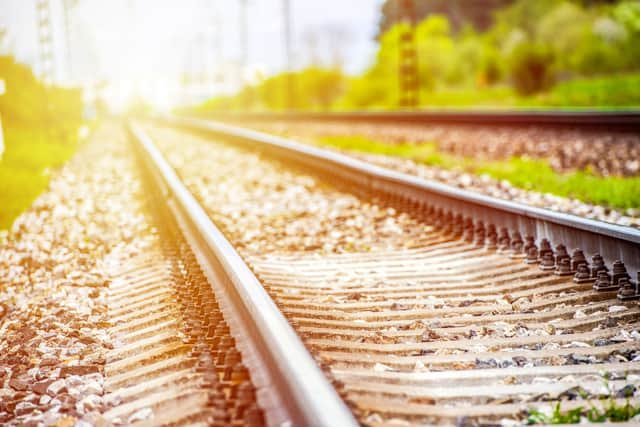Heatwave 2022: Why are trains cancelled today? Why railway tracks buckle in hot weather
and live on Freeview channel 276
Commuters in the UK have been hit with cancellations and delays due to extreme weather.
Train infrastructure has literally buckled under the heat, with temperatures as high as 41C recorded in the south and east of the country.
Advertisement
Hide AdAdvertisement
Hide AdAvanti West Coast trains were completely withdrawn, while there were cancellations and reduced services with other operators such as LNER and East Midlands Railway.
But why are British train track so badly affected by high temperatures, and how does infrastucture compare to countries with traditionally warmer climates?


Why have trains been cancelled today?
The unprecedented heatwave currently facing the UK has thrown everyday life into disarray.
Airports have suspended flights, and wildfires have broken out in parts of the country.
Advertisement
Hide AdAdvertisement
Hide AdTrain schedules have been heavily disrupted by the weather, with services in England Wales and Scotland delayed or cancelled.
This is due to a number of reasons caused by the high temperatures.
Train lines have buckled in areas, while wildfires close to tracks have left carriages unable to pass.
Likewise, signalling faults have also been caused by the 40C+ temperatures.
Advertisement
Hide AdAdvertisement
Hide AdWhy do train tracks buckle?
The current rail infrastructure in the UK is not able to deal with higher temperatures, instead being designed to handles a wider range of milder temperatures.
Damage to tracks happens when the temperature and heat surrounding the tracks gets so high that the metal starts to expand.
This expansion means that tracks can move and bend, and in serious cases, they can start to curve.
This is known as buckling.
If carriages were to try and travel over these tracks, serious safety issues could arise including the carriage coming off the track.
Advertisement
Hide AdAdvertisement
Hide AdNetwork Rail say that the track temperature that the steel beams can withstand is normally around 46C – roughly equivalent to air temperature of around 30°C.
Buckling and damage can also happen in extremely cold weather.
What can be done to combat buckled train tracks?
In order to combat strain on the tracks, trains may be slowed down while passing, in order to excert less force on the already-under pressure tracks.
Rail infrastructure across the world is different in all cases, with countries implementing tracks and structures which can withstand the most average weather conditions in that location.
Advertisement
Hide AdAdvertisement
Hide AdNetwork Rail say simply replacing tracks with those used in warmer climates is not an option, as these tracks will have worse problems when the cold British winter temperatures hit.
The transport company does have some methods, such as painting parts of the rails white to absorb less heat, to try and comabt the steel from heating up too much, but extremely high temperature as seen recently in the UK has bypassed these methods.
Therefore, as the climate changes across the world and summers get warmer and winter get colder as a result of climate change, train tracks in the UK may see more disruption in the future.
Comment Guidelines
National World encourages reader discussion on our stories. User feedback, insights and back-and-forth exchanges add a rich layer of context to reporting. Please review our Community Guidelines before commenting.
